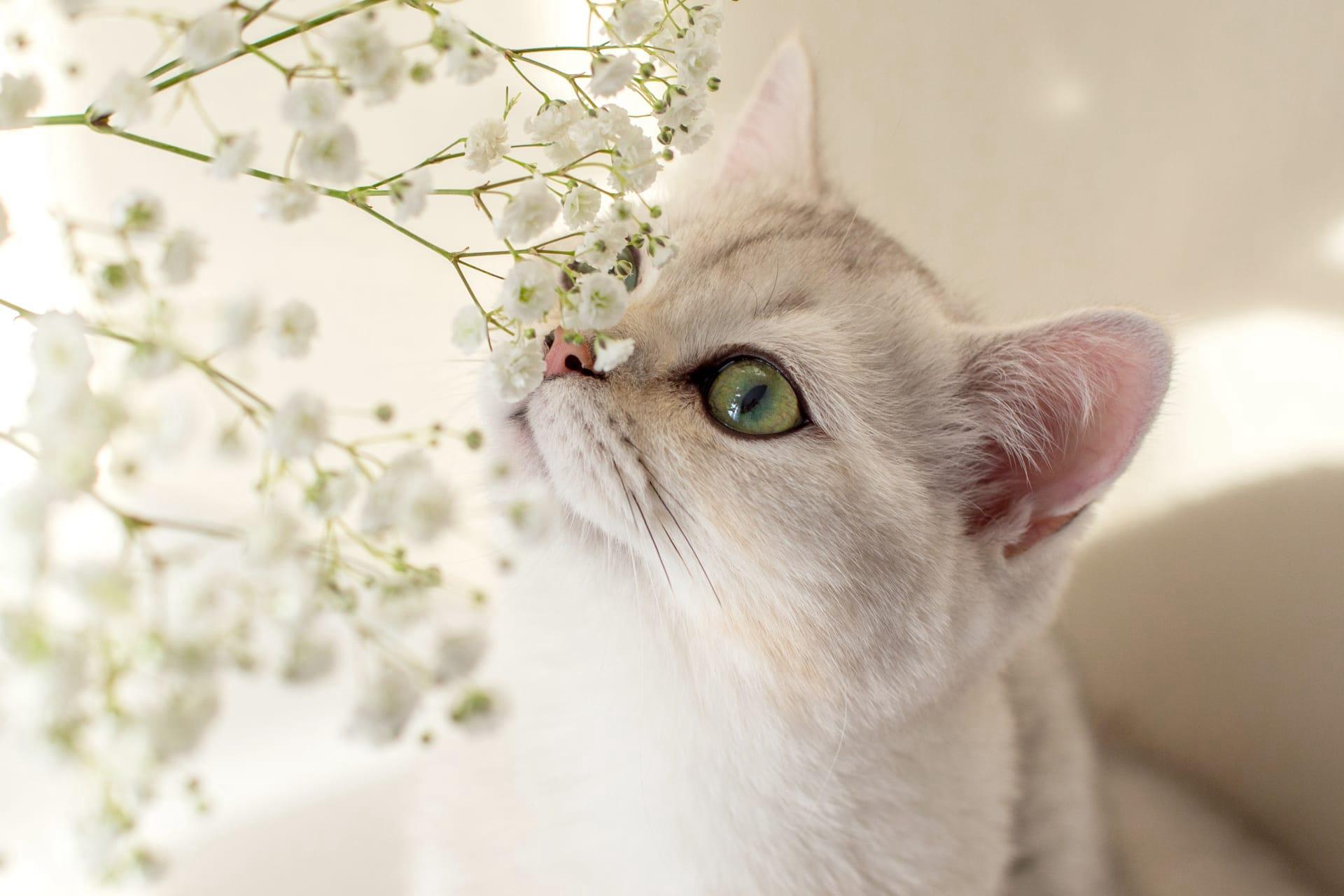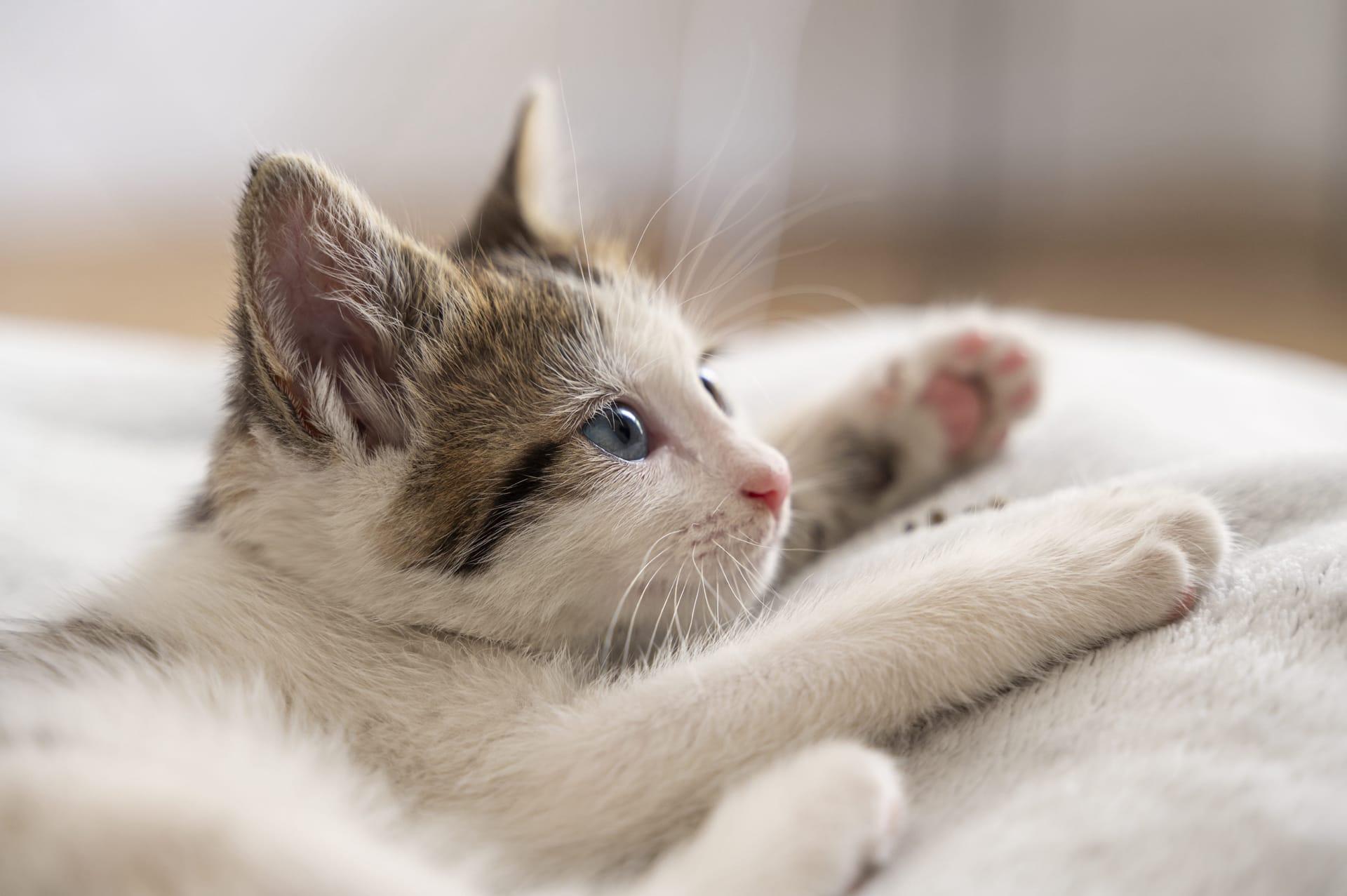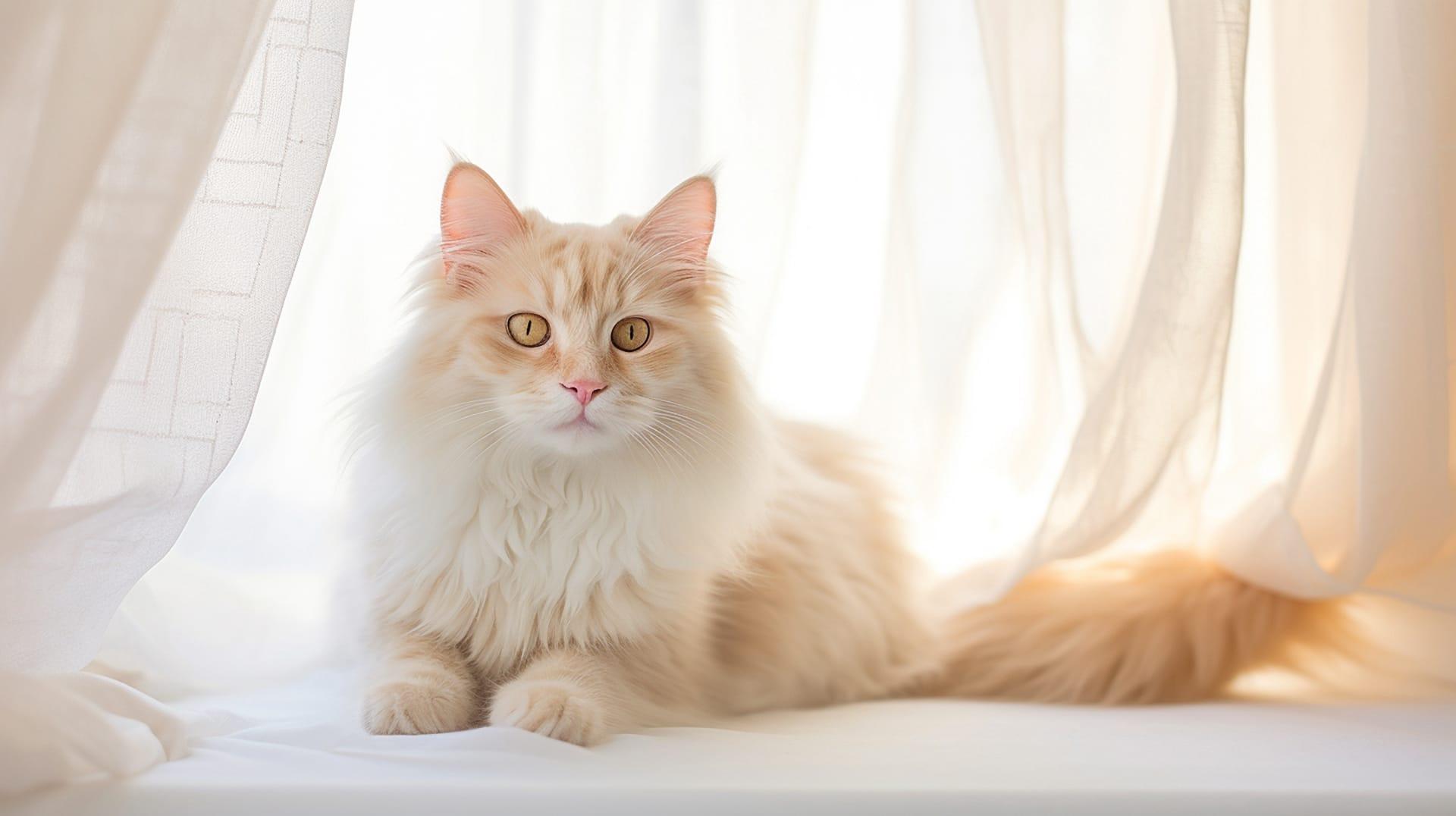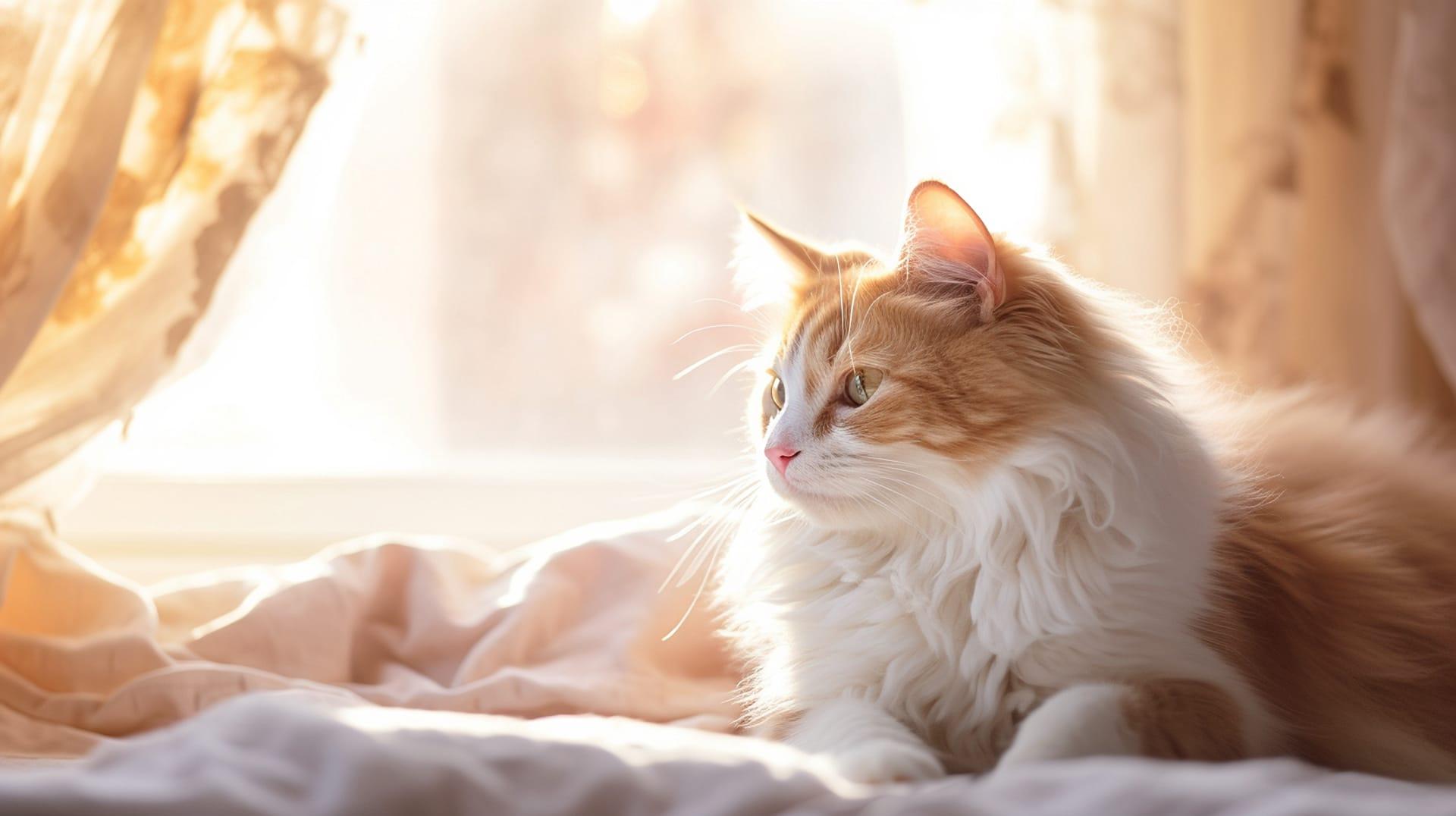1
Cats have a remarkable ability to always land on their feet, known as the "righting reflex." This reflex begins to appear at 3-4 weeks of age and is perfected at 7 weeks. When falling, a cat's inner ear, which controls balance, signals it to reorient its body. Research indicates they can do this in less than a second, adjusting their spine to rotate their front and back halves in opposite directions, allowing for a feet-first landing. This agility reduces the impact of the fall, a survival trait evolved over centuries.
Another fascinating fact is the diversity in a cat's vocalizations. Cats can produce over 100 different sounds, ranging from meows to growls. This variety surpasses dogs, which can make about ten sounds. The 'meow' is particularly interesting, as adult cats primarily use it to communicate with humans, not other cats. This behavior suggests a level of sophistication in how cats have adapted to living with humans, using specific sounds to elicit care or attention.

2
Cats have a unique grooming tool: their tongue. A cat's tongue is covered in tiny, hook-like structures called papillae, made of keratin, the same material as human fingernails. These papillae help in grooming by acting like a comb, detangling fur and removing dirt. They also aid in cooling as cats wet their fur with saliva, which evaporates and cools them down. This grooming behavior is not just about cleanliness; it also spreads natural oils throughout their coat, maintaining skin health and fur insulation.
The cat's whiskers, or vibrissae, are highly sensitive tactile hairs. They are rooted much deeper in the skin than ordinary fur and are connected to the nervous system, providing a special sensory tool. Whiskers help cats navigate in the dark, detecting even the slightest changes in air currents, indicating nearby objects or prey. They are also mood indicators; pointing forward when curious or hunting, and flattening against the face when scared or aggressive.

3
Cats have an exceptional night vision, allowing them to see in light levels six times lower than what a human needs. Their eyes have a high number of rods, receptors for low-light vision, and a reflective layer behind the retina called the tapetum lucidum. This layer reflects light back through the retina, increasing the light available to the photoreceptors. This adaptation makes them excellent nocturnal hunters.
Cats can rotate their ears 180 degrees and independently of each other. Each ear has 32 muscles that control their movement, compared to just 6 in humans. This flexibility allows them to pinpoint the exact location of sounds, crucial for hunting and survival. The ear's structure helps them detect ultrasonic noises, the high-pitched sounds made by rodents, their common prey.

4
Cats have a specialized spine. Unlike many mammals, their vertebrae have a unique 'elastic cushioning' structure, providing exceptional flexibility. This flexibility is evident in their ability to twist their bodies mid-air and squeeze through tight spaces. This spinal structure also contributes to their remarkable leaping ability, as they can leap up to six times their body length in a single bound.
Another intriguing aspect is their purring mechanism. Cats purr during both inhalation and exhalation with a consistent pattern and frequency between 25 and 150 Hertz. Studies suggest that this frequency range can promote healing and bone growth. Purring is not just a sign of contentment; it's also used in moments of fear, pain, and even near death. This behavior indicates that purring may be a mechanism for self-soothing and recovery in stressful or painful situations.

5
Cats have a strong territorial instinct. They mark their territory by releasing pheromones from glands located around their face, tail, and paws, as well as through urine marking. This behavior serves multiple purposes: it establishes their domain, communicates with other cats, and creates a comforting, familiar environment. Indoor cats often rub their face against furniture and their human companions, marking them as part of their territory.
Cats have a unique dietary requirement: they are obligate carnivores. This means they require certain nutrients that can only be found in animal flesh, like taurine, an essential amino acid. Unlike dogs and humans, cats lack certain enzymes to synthesize taurine, so they must obtain it through their diet. Taurine deficiency can lead to serious health issues in cats, including heart problems and blindness, emphasizing the need for meat in their diet.